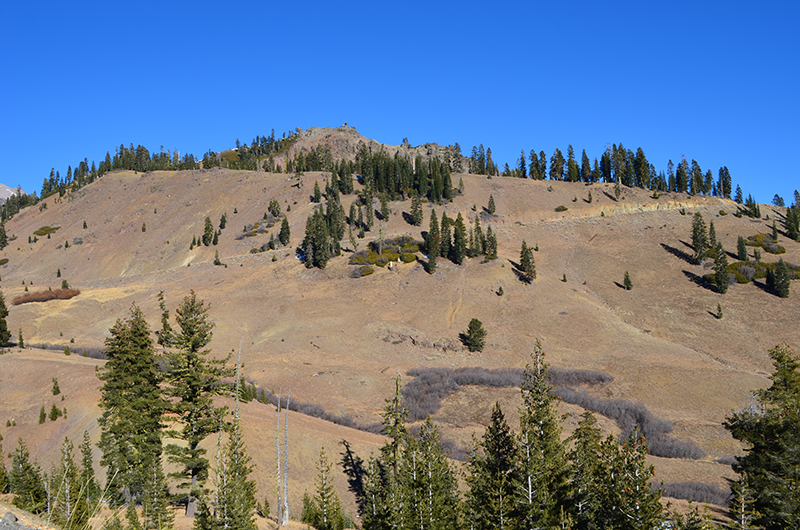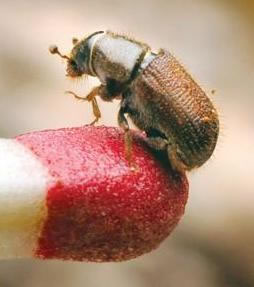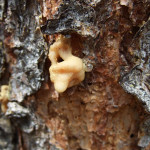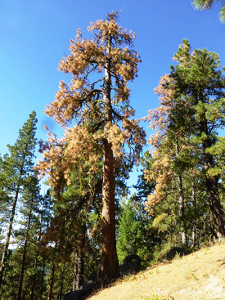How California’s drought is fueling a massive bark beetle attack on millions of trees in the Sierra National Forest, and what you can do about it
California’s Epic Drought

Tree mortality has dramatically increased during this time. The dry forests, hot summers and mild winters have set up the perfect conditions for prolonged seasons of extreme wildfire.
In fact, 2015 was a record-breaking year for wildfires.
The drought, wildfires and bark beetles (more on them later) took out over 12 million trees last year, and the beetles destroyed 800,000 acres of land in 2014.
It is important for homeowners to be cognizant of the effects of the drought and the beetles, the dangers they pose to trees on or near your property, and to know what you can do to keep your property, and especially your Home Ignition Zone (HIZ), from further risk of wildfire.
What are Bark Beetles?

Of the 200 species of bark beetle native to California, only 20 are considered invasive species. These subspecies are often named after the types of trees they attack (like the Mountain Pine Beetle, the Western Pine Beetle and the Douglas-Fir Beetle).
While bark beetles are only the size of a grain of rice (about 5 millimeters long), through strength of numbers they are able to kill millions of trees. A single mating pair of bark beetles can produce 12 million offspring during their lifespan.
How do bark beetles affect forests?
In a thriving forest, bark beetles serve to weed out any trees that are stressed or unhealthy, attacking trees weakened by wildfire, weather or people. The beetles burrow under the outer bark of a tree to reach its inner bark, where the beetles feed off the tree’s nutrients in the cambium layer and phloem, and lay their eggs.
The female beetles initiate the attack, and once they’ve begun they release pheromones to attract more beetles to the tree.
Bark beetles can often kill a tree in a matter of weeks, but it can take up to 6 months for the dead trees’ leaves to turn brown, and sometimes dead trees can take several years after that to fall down. Usually by the time the leaves have turned brown, the beetles have already moved on to other trees.

Healthy trees are generally able to ward off a bark beetle attack by emitting enough sap to keep the beetles from invading the tree. This is a tree’s sole defense against bark beetles.
You can tell by the color of the globs of sap (called pitch tubes) a tree is emitting how it is faring against the beetles. White pitch tubes indicate a successful attempt to repel an attack, brownish red pitch tubes indicate an unsuccessful attempt.
How do bark beetles have to do with the drought?
Here is where the drought really compounds the bark beetle problem, and has led to mass infestations.
Bark beetles are warm weather insects. They die off (or their numbers dwindle to a manageable size) during cold winters.
Unfortunately, the mild winters of the last few years have allowed the beetles to survive and to extend their mating season beyond the summer. And crucially, dry, drought-stressed trees aren’t able to emit enough sap to successfully stave off a bark beetle attack.
So just as the beetles are becoming stronger and more numerous than ever, they are catching California trees at a time when they are the weakest and least able to prevent an attack. And while as we mentioned, a healthy tree can usually repel a typical bark beetle attack, a large enough infestation of beetles can produce beetles in numbers large enough to overwhelm healthy trees.
To give you a sense of how severe the situation is, last October, Governor Brown followed up his 2014 state of emergency declaration on the drought with a state of emergency declaration specifically related to tree die-off and bark beetle infestations.
Are the beetles really the problem?
Cal Fire has said that this is a forest health and drought problem, not a beetle problem. The booming beetle population is an indication that many forests in the area are stressed by the drought and dying, not the root cause of the problem.
Homeowners should also note that attempts to apply pesticides to an area that is already infested have not been effective (although preventative application of pesticides prior to a beetle attack has produced modest results in some cases).
Experts have differing opinions on whether aggressive tree removal of trees killed by beetles reduces fire hazard. Cal Fire and the US Forest Service recommend removing trees killed by beetles.
However, ecologists looking at NASA data found that once the pine needles had fallen off of beetle-killed trees, the trees posed no greater fire risk (and provided no additional fuel load) than other trees. In fact in some instances, the beetle-killed trees provided less fuel for potential wildfires.
These ecologists believe this could be due to the highly flammable oils in green pine needles that dissipates rather quickly once the needles die and start decomposing. A new study from scientists at UVM and Oregon State University also found that insect outbreaks can significantly reduce the severity of wildfires.
What can you do to protect your Home Ignition Zone and property?
Before we get into dead tree removal suggestions, it is important to remember during a drought to take care of the healthy trees you have on your property. Cal Fire has a useful flyer for helping your trees survive the drought, as well as tips on watering young and mature trees.
Make sure to water in the morning or after sunset to conserve on water, and remember to deep water your trees. Adequately watering your trees will not only help them weather the drought, it can help ensure they have the defenses necessary to fight off a bark beetle attack.
What should you do with dead trees?

As you survey your property and home ignition zone, make sure to contact your local utility if you have any dead or dying trees near a power line on your property.
You should also address issues with any dead trees that could fall onto your home or other structures on your property.
Before removing trees, make sure to secure the proper permitting if necessary, and in certain situations you may also be required to hire a licensed contractor to remove the trees. Again, Cal Fire has useful specifics on how to conduct safe, lawful tree removal.
When removing or trimming trees, please make sure to properly dispose of all remnants. Do not leave infested cuttings near healthy trees, and do not leave any cuttings or kindling near your home or other structures, as it could pose a fire hazard.
If possible, do not trim healthy trees during the growing season, because the fresh sap can attract beetles.
Sources
http://www.fs.usda.gov/Internet/FSE_DOCUMENTS/stelprdb5384837.pdf
http://www.readyforwildfire.org/About_the_Bark_Beetle
http://www.dontmovefirewood.org
http://www.nasa.gov/topics/earth/features/beetles-fire.html
http://www.motherjones.com/environment/2015/03/bark-pine-beetles-climate-change-diana-six
https://www.gov.ca.gov/news.php?id=19180
http://sierranewsonline.com/help-for-homeowners-with-dead-and-dying-trees
http://sierranewsonline.com/what-to-do-about-beetle-kill-trees
http://www.sacbee.com/news/state/california/water-and-drought/article26996020.html
http://www.mdpi.com/1999-4907/5/1/103/htm
https://en.wikipedia.org/wiki/Mountain_pine_beetle
http://www.huffingtonpost.com/2015/05/05/california-drought-trees_n_7215784.html